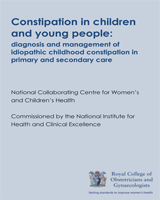| Santos et al. Study of acetylcholinesterase activity in rectal suction biopsy for diagnosis of intestinal dysganglionoses: 17-Year experience of a single center. 2008. Pediatric Surgery International 24[6], 715-719Germany. | Clinical data poorly reported |
| Montedonico et al. Histochemical staining of rectal suction biopsies as the first investigation in patients with chronic constipation. 2008. Pediatric Surgery International 24[7], 785-792 | Clinical data poorly reported |
| Nofech-Mozes et al. Difficulties in making the diagnosis of Hirschsprung disease in early infancy. 2004. Journal of Paediatrics and Child Health 40[12], 716-719Australia. | Small sample size, weak study design: 3 case studies |
| Polley et al. Suction rectal biopsy in the diagnosis of Hirschsprung's disease and chronic constipation. 1986. Pediatric Surgery International 1[2], 84-89Germany. | No clinical data |
| Iwai et al. Reliability of anorectal manometry in the diagnosis of Hirschsprung's disease. 1988. Zeitschrift fur Kinderchirurgie 43[6], 405-407 | Study on anorectal manometry, no useful data on rectal biopsy |
| Tomita et al. Histological studies on Hirschsprung's disease and its allied disorders in childhood. 2004. Hepato-gastroenterology 51[58], 1042-1044 | No clinical data |
| Simpson et al. Surgical evaluation and management of refractory constipation in older children. 1996. Journal of Pediatric Surgery 31[8], 1040-1042 | Clinical data poorly reported. No analysis of correlation between clinical data and histological diagnosis |
| Mishalany et al. Chronic constipation. Manometric patterns and surgical considerations. 1984. Archives of Surgery 119[11], 1257-1259 | Scant clinical data. No comparison made between groups. 80 patients: 3 segmental dilatation of colon, 4 Hirschsprung's disease, 73 with radiologically dilated anorectum + impaction, but 49 biopsies all normal in the latter group |
| Ikawa et al. Acetylcholinesterase and manometry in the diagnosis of the constipated child. 1986. Archives of Surgery 121[4], 435-438 | No clinical data |
| MacMahon et al. Hirschsprung-like syndromes in patients with normal ganglion cells on suction rectal biopsy. 1981. Journal of Pediatric Surgery 16[6], 835-839 | Small sample size, weak study design: 3 case studies |
| Anupama et al. Ten-year experience in the management of total colonic aganglionosis. 2007. Journal of Pediatric Surgery 42[10], 1671-1676United States. | Case series, no comparison group. Population not relevant to the guideline: 25 children with total colonic aganglionosis chosen from a series of 831 children with Hirschsprung's disease |
| Ito et al. Maturation of the rectoanal response in premature and perinatal infants. 1977. Journal of Pediatric Surgery 12[3], 477-482 | No clinical data |
| Bonham et al. A 7-year study of the diagnostic value of rectal mucosal acetylcholinesterase measurement in Hirschsprung's disease. 1987. Journal of Pediatric Surgery 22[2], 150-152United States. | Scant clinical data |
| Weintraub et al. A simplified approach to diagnostic rectal biopsy in infants and children. 1977. American Journal of Surgery 134[2], 307-310 | Clinical data poorly reported |
| Kurer et al. Suction biopsy in Hirschsprung's disease. 1986. Archives of Disease in Childhood 61[1], 83-84United Kingdom. | No clinical data |
| Momoh. Short-segment Hirschsprung's disease. 1988. Tropical Doctor 18[1], 16-19United Kingdom. | Histological findings not reported in correlation with clinical variables |
| Bagdzevicius et al. Experience of acetylcholinesterase histochemistry application in the diagnosis of chronic constipation in children. 2007. Medicina 43[5], 376-384 | Clinical data poorly reported |
| Wheatley et al. Hirschsprung's disease in adolescents and adults. 1990. Diseases of the Colon and Rectum 33[7], 622-629 | 5 case studies: 2 adolescents and 3 adults |
| Barr et al. Clinical evaluation of the histochemical diagnosis of Hirschsprung's disease. 1985. Gut 26[4], 393-399 | Not possible to establish correlation between clinical presentation and histological findings |
| Low et al. Accuracy of anorectal manometry in the diagnosis of Hirschsprung's disease. 1989. Journal of Pediatric Gastroenterology and Nutrition 9[3], 342-346 | 45 patients had concordant results (both on manometry and biopsy) and only those were included in the analysis for clinical features, but it is unclear why. 4 patients with rectal biopsies showing aganglionosis but negative manometry were excluded, considering rectal biopsy is the gold standard to diagnose HD this introduces bias in the study. |
| Wendelschafer-Crabb et al. Mucosal nerve deficiency in chronic childhood constipation: a postmigration defect? 2009. Journal of Pediatric Surgery 44[4], 773-782United States. | No clinical data reported |
| Yadav et al. Hirschsprung's disease: is there a relationship between mast cells and nerve fibers? 2009. World Journal of Gastroenterology 15[12], 1493-1498 | No clinical data reported |
